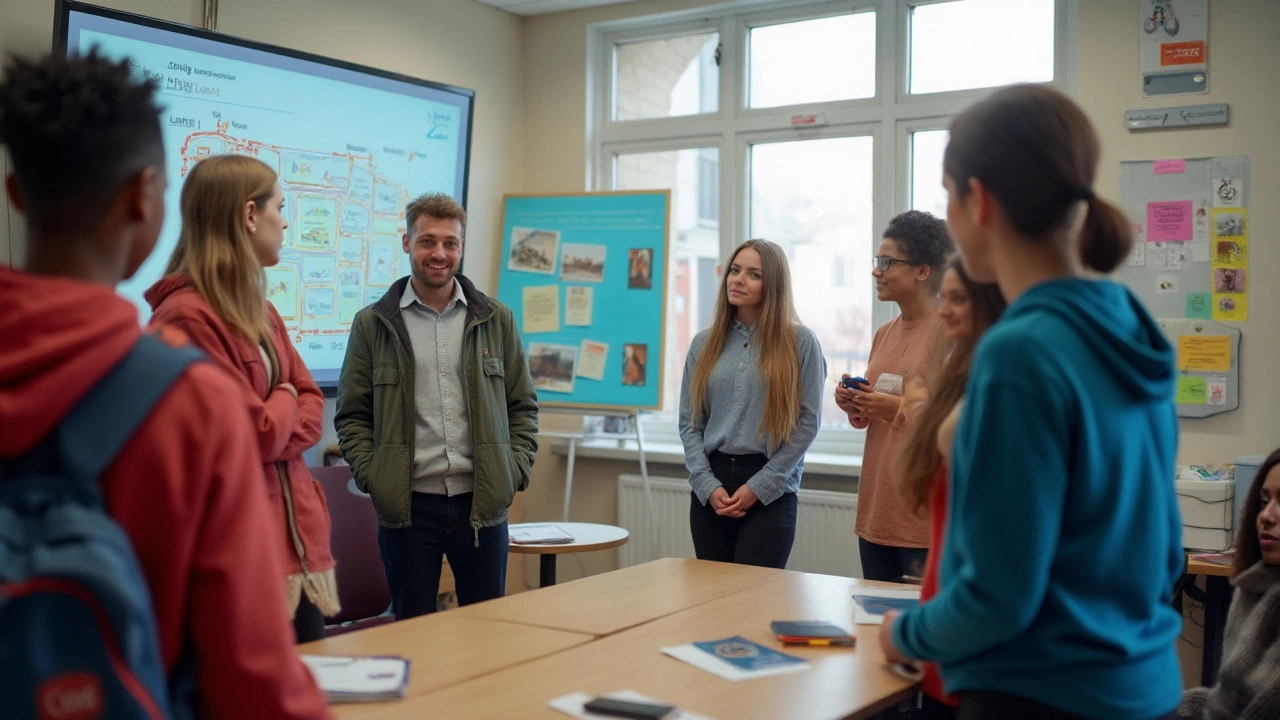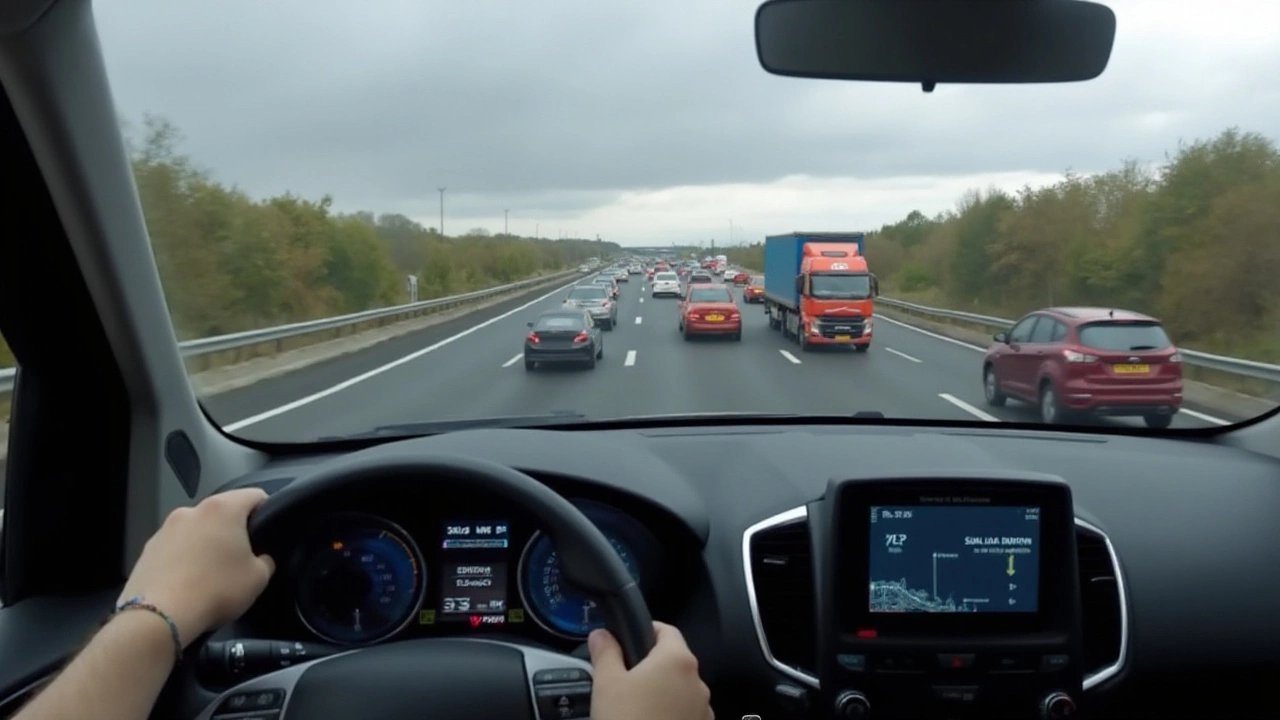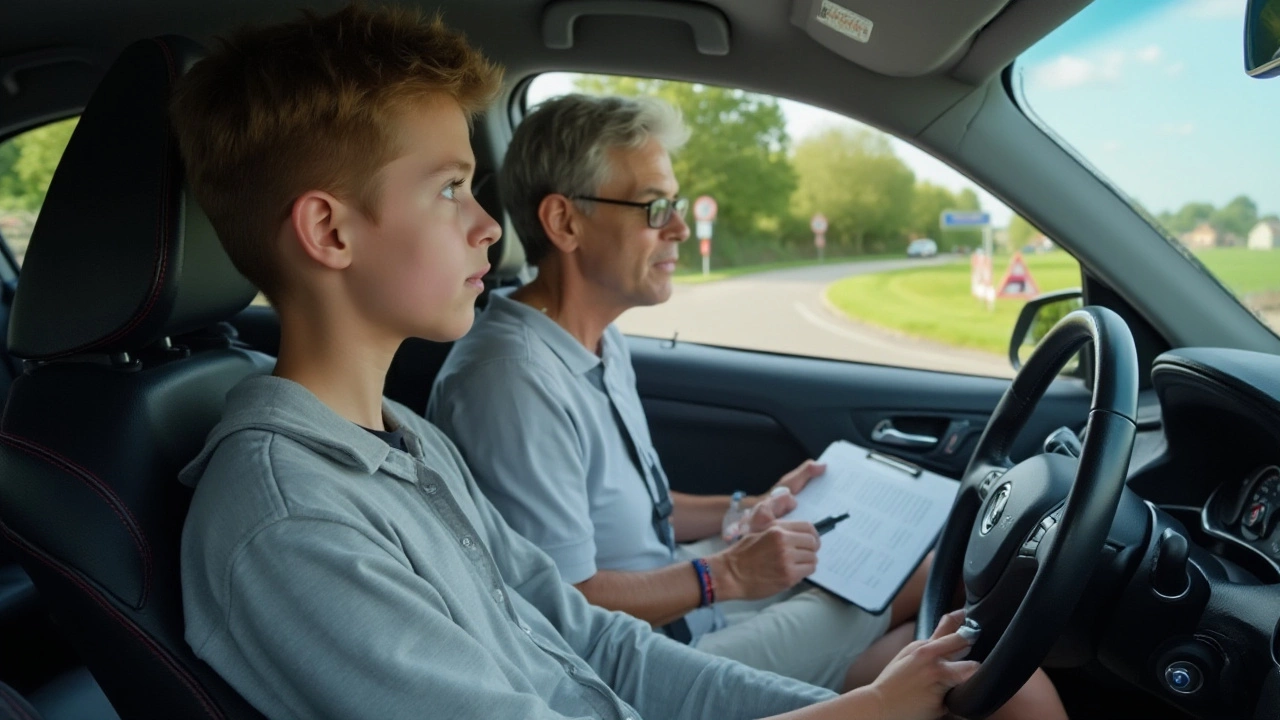Embarking on the road to becoming a licensed driver can be both exciting and nerve-wracking. A mock driving test serves as a valuable step in this journey by offering a glimpse into the experience of the actual driving examination. Conducting a practice test under test-like conditions can significantly boost a learner driver's readiness.
During a mock test, drivers have the opportunity to navigate through various scenarios they might encounter during the official test. From mastering parking techniques to gauging speed control, the mock test covers core driving skills. Importantly, it provides a chance for learners to identify their strengths and weaknesses, allowing them to focus their practice on specific areas in need of improvement.
- The Purpose of a Mock Driving Test
- Structure of the Test
- Common Mistakes During a Mock Test
- Preparing for Your Mock Test
- How to Interpret Your Results
- Building Confidence for the Real Test
The Purpose of a Mock Driving Test
A mock driving test is an invaluable tool crafted to prepare learner drivers for the real-world examination. Essentially, its purpose lies in familiarizing drivers with the format and pressures of the actual driving test without the weight of it being the real thing. By simulating the conditions of the official driving exam, it offers a space where mistakes become learning opportunities rather than expensive setbacks. This preparatory step enables learners to gain insights into their driving abilities, identify weaknesses, and work on rectifying them before the stakes are raised in the actual test. Engaging in a mock driving test can be likened to rehearsing for a play; it offers the chance to iron out errors and build confidence in one's performance.
Many learner drivers find that the nerves and anxiety surrounding driving tests can interfere with their abilities, even if they are usually competent and confident on the road. This is where a mock driving test shines, as it provides a pressure-free environment to practice under the guidance of a simulated examiner. A study by the Driving Standards Agency found that drivers who practiced with at least one mock test had a 20% higher pass rate compared to those who did not. This statistic highlights the pronounced impact of mock tests not just in boosting familiarity but in enhancing actual performance during the official examination.
Mock driving test sessions cover various elements of driving, from navigating road signs to executing complex maneuvers, all of which are critical components of the real test. These sessions often involve a self-assessment or feedback phase where instructors can offer personalized advice and tips, which can be transformative for learners. Some experts even recommend taking multiple mock tests to cover different routes and conditions, thereby broadening the learner's exposure to varied driving experiences. As the famed automotive writer Jeremy Clarkson once put it, "Knowing how your vehicle and your anxiety work together is half the battle won."
In embracing the full scope of what mock tests offer, learner drivers can shift from nervous anticipation to assured readiness. They are not just about perfecting driving skills; they are exercises in acquiring test-taking strategies, understanding examiner expectations, and learning to manage stress effectively. A mock test acts as a dress rehearsal, helping drivers address practical gaps and subconsciously engrain the flow of the exam day itself. This mental and emotional preparation can be as crucial as the physical act of driving. Therefore, anyone serious about success in their driving journey should consider integrating mock tests as an essential, non-negotiable part of their overall training plan.
Structure of the Test
Understanding the structure of a mock driving test is crucial for any learner driver looking to boost their confidence before the real driver’s examination. Essentially, the mock test is designed to emulate the conditions of a genuine driving test, providing learners with a practical run-through of the entire experience. Most mock tests commence with a brief session where you are required to identify and explain certain components under the hood of the vehicle, an exercise often referred to as the 'show-me, tell-me' part. This initial phase tests your basic knowledge of the car you are operating.
Following this, the core driving assessment begins, lasting approximately 40 to 60 minutes, echoing the typical duration of a real driving test. Over this timeframe, learners are expected to demonstrate competence in various driving tasks. From executing complex parking maneuvers such as parallel parking to the simple but essential task of reversing around a corner, these exercises encompass a comprehensive range of potential on-the-road scenarios. Specific attention is often given to navigating roundabouts and dealing with various road types, including intersections and congested urban environments.
Instructions given during the test are meant to mimic those of a real examiner. For instance, you might be asked to perform an emergency stop or follow a route dictated solely by road signs, which is a part known as independent driving. Peter Johnson, a veteran driving instructor with over two decades of experience, advises,
"Emphasizing practice in independent driving is key because it prepares the learner to make competent and safe decisions without external guidance."The mock test will also include driving on dual carriageways and navigating under various speed constraints. Mastery of these elements ensures you are comfortable and adaptable behind the wheel.
Feedback plays a significant role once the mock driving is completed. An essential component of the mock test is an intricate debriefing, where detailed feedback is provided on your driving performance. This retrospective often highlights areas of strength and addresses any driving faults encountered during the practice test. Such feedback can be invaluable; for instance, knowing if you are prone to mirror omission or improper junction positioning allows targeted corrective practice. For more personalized improvement, you may even receive a breakdown that quantifies the occurrence of these errors in comparison to traditional pass or fail rates.
It's important to approach a mock driving test with the right mindset. Look at it not only as a rehearsal but as constructive insight into your driving ability. This detailed understanding of the test's stages encourages a smarter and focused preparation strategy. Familiarity with the test’s structure helps build your confidence as you progress along your driving journey, turning any initial apprehension into the skillful competence needed for the final, real test day.

Common Mistakes During a Mock Test
Undertaking a mock driving test can be an enlightening experience, shining a light on the intricacies of driving that might not be apparent during casual practice with your instructor or a family member. However, there are common pitfalls that learners tend to fall into during these simulations. For starters, many test-takers might struggle with anxiety that impacts their concentration, often leading to simple but avoidable mistakes. Keeping a clear head is crucial, as overthinking can be just as detrimental as not thinking enough. This anxiety can often manifest itself in rushing through maneuvers. Learners should remind themselves that while being confident is good, overly hurried movements can lead to errors such as misjudging distances when parking or forgetting to check blind spots.
Another frequent issue observed is improper mirror use. Many learners forget the importance of regular and consistent mirror checks throughout different stages of driving. Not only are mirror checks critical during lane changes and turns, but they are equally necessary when slowing down, stopping, or even when simply driving straight. Practicing the habit of ‘mirror-signal-maneuver’ is vital and allows learners to be aware of their surroundings at all times. There's also a common tendency to neglect road signs, particularly those indicating speed limits. In mock settings, examiners often observe that learners might either continue driving at a comfortable speed irking other road users or accelerate excessively when shifting from an urban to a rural road setting.
Speaking of speed control, it's not just about speed limits. Proper speed management involves adjusting to traffic conditions, weather, and even specific road layouts. For example, navigating through a roundabout too quickly is a recipe for disaster. Sometimes, learners exhibit poor lane discipline. They might stray too close to the curb on narrow streets or fail to maintain the center line, which can be particularly hazardous in busy traffic. One practical tip is to visualize the lane boundaries even when they aren't clearly marked on the road. Poor gear selection is another common mistake. Novices often fail to smoothly transition between gears, which can lead to uncomfortable jerks or even stalling the vehicle during more complex driving tasks like hill starts or navigating through stop-and-go traffic.
According to John Doe, a seasoned driving instructor, "Preparation is key. Many learners underestimate the challenges of a mock test, treating it too lightly. They need to view every mock test as an opportunity to realistically gauge their preparedness, as it closely mimics the real test environment."Additionally, not signaling appropriately is a problem that arises, either through failure to signal or signaling too late, which can confuse other road users. An effective way to resolve this is by observing the road ahead, thereby giving ample time to signal your intentions early. Lastly, improper handling at junctions is a noted issue. Some learners either approach too quickly and end up overshooting the holding line or wait too long before finding a gap to merge into traffic, causing unnecessary delays or frustration to others. Deploying a strategic approach to junctions ensures smoother navigation and confidence boost during testing scenarios.
Preparing for Your Mock Test
Getting ready for a mock driving test takes more than just showing up with your learner's permit. You need a game plan, just like preparing for any other important exam. The more methodical and thorough your preparation, the more confident you'll feel behind the wheel. Start by familiarizing yourself with the test's format, which typically mirrors the structure of the real driving test. This means you'll need to know the basics of road safety, speed management, and vehicle control, as well as specific maneuvers like parallel parking and reversing. Make sure you also understand the scoring criteria, which will help you focus on high-impact areas.
Begin by scheduling regular practice sessions with a qualified driving instructor. These sessions will provide structured guidance and constructive feedback. Aim to practice in a variety of driving conditions and road types, including residential areas, highways, and urban settings. This diversity of experience will prepare you for the unexpected challenges that might crop up during an actual driving test. Pay special attention to maneuvers you find difficult; consistent practice can turn weaknesses into strengths. Additionally, take time to review the official highway code or road rules in your area, as part of your test could involve theoretical questions based on these rules.
You might also consider mock test checklists, which can act as a helpful guide to ensure you cover all necessary skills. Practice anticipating children darting onto the road, sudden stops by vehicles in front of you, and other unexpected scenarios to sharpen your reactive driving skills. A mock driving test should be as realistic as possible, so use practice situations to simulate the tension and pressure of the real test day. Remember, mental preparation is as crucial as physical rehearsal. Visualization exercises, where you mentally map out the drive focusing on challenging parts, can significantly lessen anxiety levels.
"Success is where preparation and opportunity meet." – Bobby Unser
Packing Your Pre-Test Toolkit
The right tools and resources can greatly enhance your practice experience. Keep a driving journal for noting areas that need improvement and tracking your progress. This can serve as a confidence booster when you see how far you've come over time. Engage with online forums and driving communities. Sharing experiences with other learner drivers can provide new insights, encouragement, and practical tips. Remember, preparing for a mock test is about building habits and mental readiness, not just memorizing routes. Each mistake is an opportunity for learning and growth.
Finally, remember to sleep well before the day of the test. Your cognitive functions, such as decision-making and reaction time, are at their best when you're well-rested. Eat a balanced meal to maintain energy levels, and ensure you have all required documents organized the night before. Double-check this list in the morning. These little non-driving preparatory steps are crucial in keeping stress at bay, leaving room for you to focus purely on your driving skills.

How to Interpret Your Results
Completing a mock driving test is just the first step; understanding the results is where the real learning begins. After the mock test, learners receive detailed feedback identifying areas where they performed well and pinpointing specific mistakes. Recognizing the significance of each mistake can transform how you approach your driving practice. For instance, if you repeatedly fail to check your mirrors, realizing the safety implications can motivate you to develop better habits. By acknowledging weaknesses, you can focus on actions needed to rectify them, ultimately leading you to become a competent and confident driver.
The feedback from the mock test usually includes a breakdown of your performance in various categories, much like what you would expect from the official driving test. This may include assessments on your speed control, observation skills, and decision-making ability. It's not enough to know what went wrong; you need to understand why it was a mistake and how it could affect safety. By reflecting critically on your test outcomes, you can tailor your practice sessions to target specific areas, which can greatly improve your overall driving abilities.
It's also beneficial to keep a record of your mock test results over time. Tracking your progress can offer a visual affirmation of improvement and help maintain motivation. Suppose you note a consistent improvement in specific skills, like parking maneuvers; it boosts your confidence and readiness for the real exam. On the other hand, persistent trouble in specific areas, such as interpreting traffic signs, indicates a need for additional focus and might require extra instruction or practice. James Stewart, a well-respected driving instructor, once said,
"The key to conquering the driving test is understanding your strengths and weaknesses and consciously working to overcome them each day."
In some places, the results may also incorporate statistical analyses to show how your performance compares to average learners. This comparative feedback might be presented in a table format, highlighting where you stand in relation to peers. Such data can be invaluable not just for practical improvement but also for boosting morale, especially if your scores are improving over time. Here's a hypothetical example of what such data might look like:
| Driving Aspect | You | Average |
|---|---|---|
| Speed Control | 85% | 80% |
| Observation | 70% | 75% |
By observing such detailed insights, you adjust your learning plan effectively. In essence, learning how to interpret and act on your mock test results is a strategic component in transitioning from a learner to a licensed driver.
Building Confidence for the Real Test
Facing the real driving test can often seem like a daunting task for many learner drivers. Yet, one of the most impactful ways to boost your confidence is through the strategic use of mock driving tests. By providing a real-time simulation of the actual exam conditions, these practice sessions help in easing nerves and anxiety. Understanding the typical structure and pressure of the examination becomes an invaluable tool for overcoming fear. This experience allows learners to acclimate to the testing environment, making the actual day seem more familiar and thus, less intimidating. Repeated practice in situations that mirror the test helps in fostering a sense of assurance that grows with time, turning apprehension into trust in one’s capabilities.
Preparation is crucial when it comes to mock driving test scenarios, which, in effect, lay the groundwork for the real thing. It's important to approach practice tests seriously and view them as dress rehearsals. A surprising fact established by a recent survey in the field of driver education is that students who conducted at least three mock tests had a passing rate that exceeded 70% in their first attempt. With practice comes refinement of skills, and the muscle memory formed from consistent practice often translates into smoother execution during the test itself. Simulating these moments ensures that learners know exactly what to expect and significantly reduces the chance of unexpected surprises.
Additionally, reflecting on feedback from the mock tests is vital to building confidence. After each session, take a moment to sit down with the instructor to discuss the results. Pay attention to constructive criticism, focusing on both the positive outcomes and areas needing improvement. This analytical approach not only targets weak spots but also reinforces what you are doing well, providing further motivation. As American motivational speaker Brian Tracy once said in a captivating lecture,
“Confidence is the foundation for all great human achievements.”His words underscore the importance of developing a solid base of self-assuredness, particularly when tackling tasks like driving, which requires coordinated multitasking under pressure.
Embracing a positive mindset is another critical factor when it comes to building confidence. Entering each mock test with the right attitude can make a world of difference. Visualizing success, coupled with regular breathing techniques, can calm nerves significantly. In preparation for the test day, devise a routine that includes a healthy meal, sound sleep, and a practice session to keep skills fresh. Consider creating a checklist of tasks to help manage pre-test jitters and ensure that nothing is overlooked. This systematic approach creates a feeling of readiness and control.
Finally, fostering a resilient perspective towards mistakes enhances confidence. Learning from errors without getting disheartened can be a turning point in one’s driving journey. Remember, mistakes are not failing; they are steps toward perfecting your driving capabilities. By integrating the experience, feedback, and mindfulness tactics discussed, learner drivers are well-equipped to approach the actual driving test not only with competence but with a newfound sense of self-confidence and readiness to achieve success.

